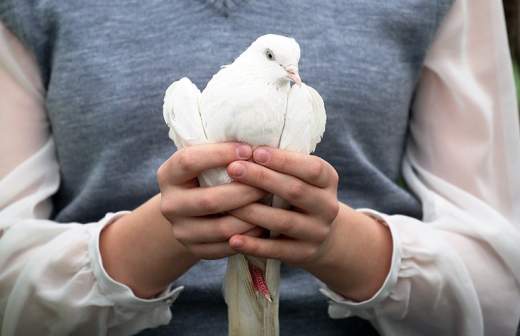The Twelve-day feast of the Annunciation: signs for a happy and rich life on April 7

The Annunciation of the Blessed Virgin Mary in the Orthodox calendar is one of the 12 main holidays after Easter. It is celebrated annually on April 7, nine months before Christmas. Previously, this holiday was called the "Day of Greeting", "proclamation" and "Conception of Christ", but the name we are familiar with came into use only since the 7th century. The Russian name comes from the Greek word Evangelismos, meaning "Gospel" or "good news." On this day, the Archangel Gabriel appeared to the Virgin Mary and told her the good news that she would soon become the mother of the Son of God. For more information about which traditions believers observe and what they should pay attention to on the holiday, see the Izvestia article.
Weather signs for the Annunciation of the Blessed Virgin Mary
The celebration of the Annunciation begins with Great Compline, special prayers that are performed after the evening meal. After that, the all-night vigil begins. The clergy dress in blue robes: it is the heavenly color that is considered the symbol of the Virgin. Everyone who comes to church is told about the essence of the holiday and the wonderful story of the appearance of the Son of God.
Priest Igor Morozov confirms that the Annunciation literally means "good news", which testifies to the liberation of the entire human race from sin and eternal death.
According to the Scriptures, on this day the Archangel Gabriel appeared to the Virgin Mary and told the girl about her true destiny. The miraculous event is described by the Evangelist Luke: "Hail, Full of Grace! Gabriel said. — The Lord is with You! Blessed are You among the wives." "Handmaid of the Lord, let it be done to me according to your word," was Mary's reply. The phenomenon was the first good news that humanity received after the Old Testament expulsion of Adam and Eve from paradise, and symbolizes humanity's redemption of Eve's fall.
Another important tradition is the release of pigeons. As Archpriest Igor Fomin explained, the tradition has a twofold explanation. On the one hand, the dove is a symbol of the Holy Spirit and his blessing. On the other hand, in everyday life, people often came across birds in the fall that could not fly to warmer climes and needed help: they were picked up and fed, and released at the Annunciation. After the revolution, the church tradition of releasing pigeons was interrupted, but in the 1990s it was revived. Patriarch Kirill of Moscow and All Russia is releasing a flock of white pigeons into the sky for the holiday. The ceremony is held annually in the Annunciation Cathedral. Hundreds of parishioners gather to watch the birds fly.

In addition to Orthodox traditions, the Annunciation is accompanied by various folk customs and omens. Although most believers consider them pagan and fictional, over the years they have become part of Russian culture. Weather signs are very popular, as the holiday is considered a harbinger of real spring.
It is generally accepted that whatever the weather will be on the Annunciation, it is worth waiting for the same on Easter. However, if it is unusually hot outside on April 7 for the middle of spring, then it will be cool on a Bright Sunday. If cranes fly high on the day of the Annunciation, then this leads to bad weather, and swallows — to a warm spring. The return of migratory birds also indicated a warm spring.
In case of rainy weather, a rich harvest of nuts and lots of fish are expected for the celebration in summer, and the wind and fog promise a good harvest of cereals and mushrooms. The snow on this holiday, on the contrary, foreshadowed a lean year.
Folk signs for the Annunciation for a happy and rich life
The Annunciation was considered by the people to be one of the symbols of the arrival of spring, therefore, traditions on this day are associated with future crops, and therefore a well-fed and rich life. So, the peasants at the Annunciation, as a rule, consecrated the cooked grain: they placed an icon next to the tub in which it was stored and read a special prayer for a successful harvest.
According to religious tradition, a person's earthly life is considered not from the moment of birth, but from the moment of conception. Therefore, exactly nine months after the Annunciation, on January 7, Orthodox believers celebrate Christmas. It is with the Annunciation that the description of the earthly life of Jesus Christ begins, therefore the holiday is very significant and revered.
The holiday falls during the period of Great Lent, and therefore some indulgences are possible for believers who observe the restrictions. So, fish, pastries without meat filling and wine can be served on the table at the Annunciation. Believers on this day bake lenten bread — prosphora. They consecrate the dish in the church at the liturgy, after which they distribute it to relatives and friends.
It is believed that on the day of the holy holiday it is forbidden to work, including doing housework. Instead, it is necessary to devote the day to good deeds. Also, you should not plan new trips and long-distance trips on this day. It is believed that premature plans on this day can attract misfortunes and troubles to the house.
Переведено сервисом «Яндекс Переводчик»
